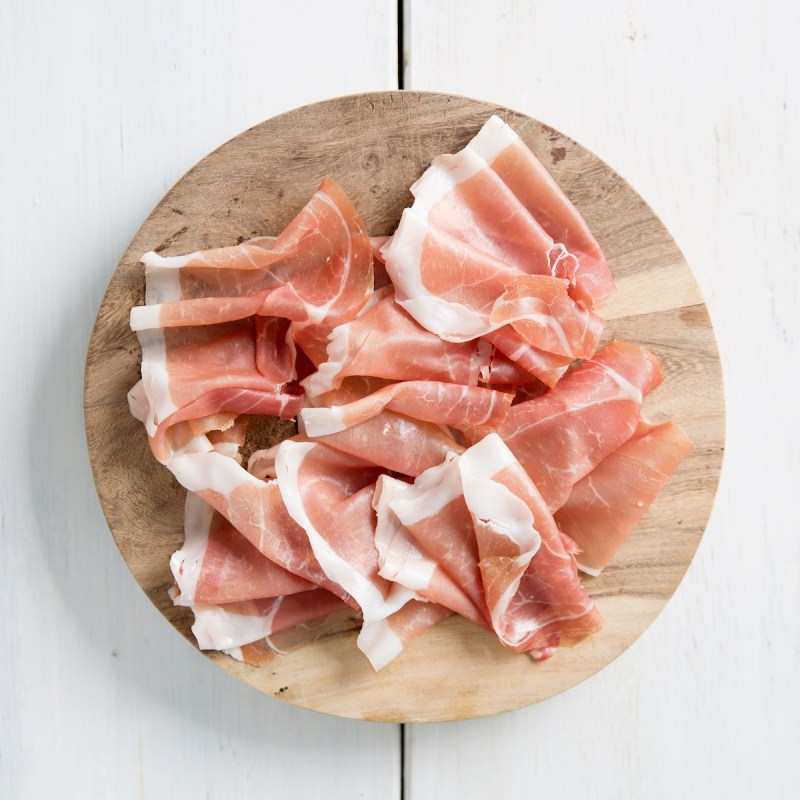
I spent my very first night in Italy in the city of Parma. I had been traveling for about 18 hours by the time I arrived, and I was starving. As soon as I dropped off my bag I headed for Piazza Garibaldi, where aperitivo hour was in full force.
Videos by TravelAwaits
Everywhere I looked people were enjoying wine, meat, and bread… and so began my introduction to two of the best things about Italian culture: good food and centuries of tradition. I couldn’t have picked a better place to begin my education than Parma, home of Prosciutto di Parma and Parmigiano Reggiano.
Prosciutto simply refers to any Italian air-cured ham. The two most well known types are Prosciutto di Parma, and Prosciutto di San Daniele. What makes one type of ham better than another has everything to do with the climate and the laws that regulate the production of DOP products.
Let’s use Prosciutto di Parma as an example: By law, Prosciutto di Parma can be produced only in the countryside surrounding the city of Parma. There are four ingredients: the mountain air from the Apennines, salt, pork, and time.
Prosciutto di Parma and Prosciutto San Daniele are both DOP foods, but there are other Italian hams that are also delicious and have obtained the DOP protection.

What Does DOP Mean?
DOP means Protected Designation of Origin, it is a designation given to a product by the European Union. It certifies and protects the names and traditions of high-quality European foods whose characteristics depend on the territory where they are produced. The geographical environment includes natural factors and human factors handed down over time. In order to obtain the DOP protection, the stages of production, processing, and preparation must take place in a defined geographical area. Each step from production to packaging is carefully controlled.
Less strict than DOP, IGP means Indication of Geographic Protection. This certification guarantees that at least one step of the process is in a fixed geographic area.
There are seven main prosciutti DOP: Prosciutto di Modena (from Emilia Romagna); Prosciutto Toscano (from Tuscany); Prosciutto Veneto Berico Euganeo (from the Veneto); Prosciutto di Carpegna (from Marche); Jambon de Bosses (from Val d’Aosta); Prosciutto di Parma, and Prosciutto di San Daniele.
Other high-quality DOP hams include Culatello di Zibello and Speck dell’ Alto Adige.
The key thing to know when you’re shopping for prosciutto is to look for the DOP certification — this guarantees you will have a delicious, quality product.
There are many other cured meats that are erroneously referred to as prosciutto. That doesn’t mean that they’re not good, but once you’ve tasted high-quality prosciutto, you may never want anything else
What Does Prosciutto Taste Like?
Prosciutto is a delicate, slightly sweet and salty, cured ham, served so thinly sliced it is almost transparent. It comes in two varieties: crudo (raw) and cotto (cooked). For the purpose of this article, I will focus on the crudo style. Depending on where it is made, the flavor may be more sweet or salty, or there could be other herbs and spices that are added during the curing process. Basically, prosciutto tastes like the region where it was made and what the pig was fed.

Fascinating Facts About Prosciutto
No matter which region the prosciutto is from, these laws are very strict and also similar, with only slight variations such as what the pigs are fed. The pigs must be born and raised in one of 11 designated regions of Italy, not imported. They are fed a very specific diet and the conditions under which they are raised are also regulated. For example, pigs that become Prosciutto di Parma are fed a blend of cereals, grains, and whey from the Parmigiano Reggiano cheese.
Each pig receives a breeder tattoo indicating which farm it was raised on. When the pigs have reached a minimum weight of 350 pounds, they are butchered.
Only the legs of the pigs are used in the production of prosciutto. Once butchered the legs are salted and hung to dry for several weeks to several months. The salt prevents bacteria from forming and absorbs blood and moisture. The salted meat is left to rest and let the salt do its job. Later, the legs are washed and rubbed with a mixture of pork fat, salt, and in some cases herbs (depending on where it is being made), and left to cure for up to 16 months. The environment is extremely important as the only ingredients used to make these delicious hams are the pig, salt, air, and time.
Remember, no matter if it’s Prosciutto di Parma or Prosciutto Toscano, the process of curing the meat must take place only in the DOP region. In other words, you can not say a ham is Prosciutto di Parma if it was not made in Parma. This goes for all of the other DOP prosciutti.

How Do You Eat Prosciutto
Prosciutto is the star of many charcuterie boards, but it is perfect on its own. A glass of wine and a plate of prosciutto make a lovely snack. Prosciutto pairs well with certain fruits, too, such as figs and melon. You can make sandwiches with prosciutto, top off a pizza or salad, or eat it with some cheese, bread, and wine.
When it comes to what type of wine to pair with prosciutto, there are many options. Because prosciutto is a fatty and salty meat that is also slightly sweet, and even nutty, a dry red wine would work well with prosciutto. The fat in the pork will make the tannins taste less astringent and even bring forward the fruit flavors of the wine. Alternatively, you could go for a sweet or semi-sweet wine to offset the saltiness of the meat… it just depends on your taste preferences. One of my favorite pairings is Lambrusco with Prosciutto di Parma — both are products of Emilia Romagna.
No matter how you serve prosciutto or which wine pairing you choose, you really can’t go wrong… that’s the beauty of prosciutto. It’s a simple product made according to an ancient tradition.
Prosciutto is just one of many Italian specialties that visitors to Italy enjoy:
